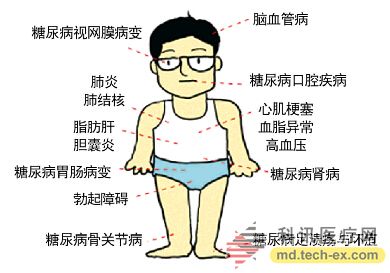Release date: 2015-06-16

The researchers believe that there is a pre-diabetes before the development of type 2 diabetes. At this time, the blood sugar level is in the "gray zone", which is higher than the normal value but lower than the blood sugar level of diabetes. According to the US Centers for Disease Control and Prevention, one in three American adults is pre-diabetes, but only about 11% are aware of their condition.
Pre-diabetes is a serious problem because many of the onset of diabetes, including nerve damage, eye problems and heart disease, have begun to brew in our bodies when diabetes has not yet been diagnosed. Without intervention, pre-diabetes is likely to develop into diabetes within 3 to 10 years. Pre-diabetes patients are 50% more likely to have heart disease and stroke than normal people.
Risk factor
Prediabetes has no obvious symptoms and can develop at any age, so it is important to understand and monitor your glycemic index (and your child's blood sugar level). This is especially true if you have the following risk factors for diabetes:
·Overweight or obese
· Abdominal accumulation of excess fat (sometimes referred to as "apple" body)
· Have a history of gestational diabetes
· Have a history of family diabetes
· Have symptoms of diabetes, including thirst, frequent urination, fatigue and blurred vision
· Have a history of elevated blood sugar levels
How to prevent pre-diabetes from developing into diabetes?
If you are a pre-diabetes, you can change your lifestyle to stop the development of pre-diabetes and reduce your risk of other diseases such as heart disease, stroke, high cholesterol and high blood pressure. Studies have shown that losing weight, healthy eating and strengthening exercise can bring your blood sugar levels back to normal. Try to make a change and consult your health advisor for guidance.
· Weight Loss: Even if you don't reach your ideal weight, losing 10 to 20 pounds can reduce your chances of developing diabetes.
· Healthy diet: Choose low-saturated fats, low-calorie and high-fiber foods such as vegetables, fruits and whole grains.
· Exercise: For most of the week, free up 30 to 60 minutes for moderate physical activity. You can also divide your physical activity into small periods of time throughout the day.
Sleep: Studies have shown that at least 6 hours of sleep per night can help reduce insulin resistance. If your sleep is affected by snoring or is awakened, you may have sleep apnea, which is a serious health condition that may exacerbate pre-diabetes.
· Drug treatment: Some diabetes drugs can be used to treat patients with pre-diabetes and prevent the progression of the disease.
Source: China Science and Technology Network
The RT-PCR Test Reagent Kit is a real-time, RT-PCR test intended for the qualitative detection of nucleic acid from SARS-CoV-2 in oropharyngeal and nasopharyngeal swab specimens from individuals suspected of COVID-19 by their healthcare provider. This test is also for use with anterior nasal swab specimens that are collected using the COVID-19 Test Collection Kit when used consistent with its authorization.
Results are for the identification of SARS-CoV-2 RNA. The SARS-CoV-2 RNA is generally detectable in the upper respiratory specimens during the acute phase of infection.
Positive results are indicative of the presence of SARS-CoV-2 RNA; clinical correlation with patient history and other diagnostic information is necessary to determine patient infection status.
Positive results do not rule out bacterial infection or co-infection with other viruses. The agent detected may not be the definite cause of disease.
Negative results do not preclude SARS-CoV-2 infection and should not be used as the sole basis for patient management decisions. Negative results must be combined with clinical observations,patient history,and epidemiological information.
PCR test Kit,PCR testing Kit,PCR detection kit,RT-PCR test reagent kit,RT-PCR test reagent
Shenzhen Uni-medica Technology Co.,Ltd , https://www.unimed-global.com